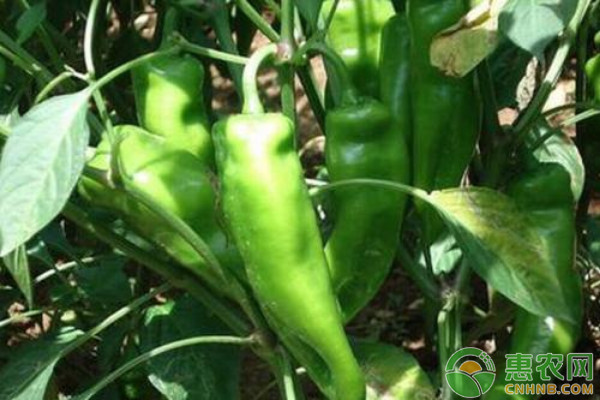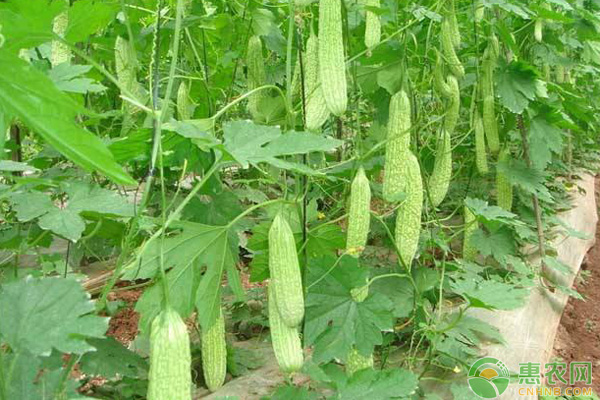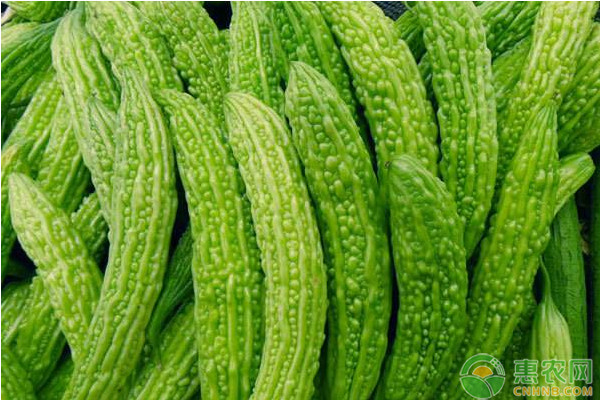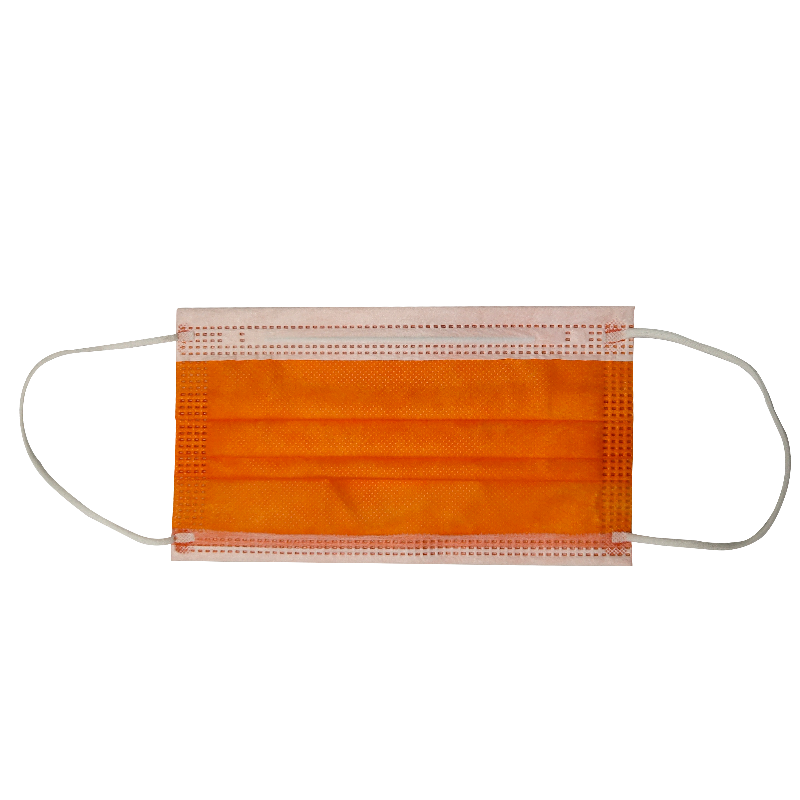In recent years, Liuyang City, Hunan Province has used the greenhouse to develop early spring pepper, autumn bitter gourd, and pine flower cultivation mode, and the economic benefits are more remarkable. The following is an expert discussion on the high-efficiency cultivation techniques of early spring pepper, autumn bitter gourd and wintering pine flower in greenhouse in Liuyang City, Hunan Province. The aim is to provide reference for vegetable cultivation in Hunan greenhouse.

1 èŒ¬å£ arrangement
In the Liuyang area of ​​Hunan Province, it is cultivated in greenhouses. Early spring peppers were seedlings in mid-November, transplanted in early February of the next year, harvested from late March to early April, and stopped in late June, and sterilized in high temperature in July; bitter gourd was seeded in late June. Transplanted in mid-July, harvested at the end of August, and stopped in mid-October; Songhuacai was seeded in mid-September in September, transplanted in mid-October, and harvested in mid-January in the following year.
2 Early spring pepper cultivation technology
2.1 variety selection
Choose the varieties of croissants or croissants with early maturity, low temperature and low light resistance, high yield and good commercial quality. The main varieties on the production are Changyan 201, Xinxiang 2 and Xingshu 215.
2.2 sowing seedlings
The seedlings are raised in the greenhouse, and the width of the seedbed is 1.2 m. The electric heating line can be laid and the bed soil can be leveled. 72-well plug tray is used. After the tray is packed with the substrate, it is placed in 2 rows and placed on the seedbed. The bottom water is poured, then the hole is sown, and 1 seed is sown per hole. After covering the substrate, the mulch is covered and the small arch shed is kept warm and moist. Maintain bed temperature 25 °C. After 70% of the seedlings were unearthed, the mulch film was removed in time to enhance the light. Keep the bed temperature 15~20 °C, try to reduce the humidity, the matrix is ​​not white, do not hit the water, and promote the root growth of the seedlings. After the leaves of the seedlings are developed, the management of the fertilizer and water should be strengthened. When the weather is fine, the spray can be applied with 0.2% complete compound fertilizer for about 10 days to promote the growth of the shoots. When the bed temperature is above 15 °C during the day, the small arch shed is opened and the night is covered with heat preservation. Diseases that are prone to occur in pepper seedlings should be caused by rickets, blight, and gray mold. They can be controlled with carbendazim, alexa or spray, once every 10~15 days. Insect pests are mainly aphids, which can be controlled by spray of imidacloprid. One week before planting, refine the seedlings, gradually reduce the temperature to 13~15 °C and control the water, and properly ventilate.

2.3 colonization
Clean the greenhouse, combine the tillage, apply lime 150 kg/667m 2 , cake fertilizer 150 kg/667m 2 or commercial organic fertilizer 500 kg/667m 2 , potassium sulfate compound fertilizer 30kg/667m 2 ; Slightly turtle-shaped, the width of the groove is 60 cm, the width of the greenhouse is 8 m, and it is 5 畦. Each raft is covered with a drip irrigation belt, covering the silver-grey two-color mulch. The membrane should be tight and smooth, and the whole preparation should be completed 1 week before transplanting. . Grab the sunny day in early February. Before planting, use hole puncher to plant the hole. It can also be planted with pepper transplanter. Planting per plant, planting 2 rows per plant, plant spacing 40 cm, planting 2 600 plants/667 m 2 , timely use after planting 95% carbendazim or 50% carbendazim syrup is poured into the water to prevent root diseases, and the planting mouth is sealed with nutrient soil or soil fertilizer.
2.4 Field Management
2.4.1 Temperature and Humidity Management
After planting, it is necessary to maintain a high temperature in the shed, promote the survival of the seedlings and induce new roots, and double-body greenhouses can cover the inner and outer membranes. In the event of extreme cold current, cover the small arch shed. Form a "four-film cover", that is, inside and outside the shed film plus a small arch shed film plus a mulch film to increase the temperature inside the shed. After the seedlings survive, the cold-resistant ability of the plants is enhanced. After the weather turns better, the small arch sheds should be uncovered. At noon, the membranes are ventilated to reduce the humidity in the shed. When the temperature is stable above 15 °C, the shed can be removed and shaken. The greenhouse film is ventilated, and the weather is fine in the evening. When the temperature rises above 20 °C, the group film can be completely opened, the top film is not removed, and it is used for rain protection. Because of the continuous rainy rain in Hunan, it is easy to cause excessive humidity in the shed and induce disease.
2.4.2 Fertilizer management
After the new roots of the seedlings are germinated, the seedlings are fertilized with a balanced compound fertilizer of about 0.3% in the sunny weather. The seedlings are topdressed by drip irrigation according to the growth of the peppers in the early stage of growth. Each time according to the soil moisture, drip 30~ 40 min, each time using fertilizer about 5 kg/667m 2 ; strict control of fertilizer and water during flowering period, foliar application of boron fertilizer; the result period is to use drip irrigation once every 10d; topdressing is best to use full-type instant smelting fertilization, the application concentration is 0.2%~0.3%, combined with spraying and spraying foliar fertilizer.
2.4.3 Pruning
Early spring greenhouse cultivation is covered by a multi-layer film, with less light, and the plants are easy to grow too fast, resulting in prolonged and easy lodging. It can be sprayed with paclobutrazol for control. Pay attention to the operation according to the specified concentration. If it is too low, the effect will not be achieved. If the plant height is too high, the concentration will be 2,500 times. At the same time, the ventilation and cooling of the greenhouse will be strengthened to promote the plant growth. Wipe off the first branch bud, the attention should be timely, the second is to choose sunny, the third is to spray the spray in time, the greenhouse due to low temperature, less light, hanging fruit early, easy to cause falling flowers, can spray pepper The fruit is preserved and preserved. After the fruit is placed, the plant is overloaded and the plant is overburdened. A row of bamboo sticks can be placed on both sides of the raft and the ropes can be fixed in the raft to prevent the plants from falling down.
2.4.4 Pest Control
Early spring greenhouse peppers are susceptible to diseases such as blight, anthracnose, blight, viral disease and bacterial wilt. Take the principle of prevention-oriented, comprehensive prevention and control, disinfect the soil and seeds before planting, reduce the humidity in the shed during the growing period, observe more often, master the law of the disease, and find that the seedlings spray in time. The disease can be controlled by metformin manganese Zn, DuPont gram dew and other agents; anthrax can be sprayed with Shigao, anthrax and Fumei, etc.; Fusarium wilt can be rooted with carbaryl carbendazim plus Jinggangmycin, and viral disease can be treated with chloramphenicol hydrochloride. Spraying and controlling the virus and other drugs; the prevention and control of bacterial wilt is mainly based on soil disinfection. It is found that the diseased plant should be immediately removed and removed from the shed, and the quicklime should be applied. It can be prevented by agricultural streptomycin.
The main pests are cotton bollworm, tobacco budworm, aphid, samovar and red spider. Helicoverpa armigera and tobacco budworm can be controlled by deltamethrin pesticides such as Kungfu or Taibaobao; aphids can be sprayed with imidacloprid and other agents for spraying, and the spray should be carefully and comprehensively focused on the back of the leaves, tender stems and shoots; In order to harm the growth point of the pepper, it can be prevented by spraying with a drug such as Nissolang and Kruth. In the peak period, the bifenthrin or dinotefuran leaf spray can be used to kill the eggs. The greenhouse can also be closed and fumigated with white powder sputum; red Spiders are sprayed with spirotetramat and ethiazole foliar sprays. They can also be closed in greenhouses and fumigated with spider mites.
2.5 harvest
In early spring, the early-growing peppers began picking green peppers in early April. They should pick them up as soon as possible, grab the market price, and promote the expansion of the subsequent fruits. According to the market and varieties, they should be harvested every 5~7 days.
3 autumn bitter gourd cultivation technology
3.1 Variety selection
After the autumn extension of this model, the cultivation of bitter gourd emphasizes high-density cultivation. Therefore, it should be selected from the main vines, early maturing, high-yield, heat-resistant and commercial traits. At present, the main varieties of local production are Chuntai bitter gourd and Chunyue bitter gourd.
3.2 sowing seedlings
Sowing in late June, using 50-hole tray seedlings. The seed amount is about 400g/667m2, soaked in 50~55°C hot water before sowing, and then soaked for 4~6 hours after cooling. After the seeds are fully absorbed by water, they are germinated at 30°C, and the seeds can be sown when exposed. The germination speed of bitter gourd seeds is different. The white seed can be planted first. Each spot is spotted with 1 capsule and the depth is about 1.5cm. Pay attention to the seed when laying, cover the substrate after sowing, pour the bottom water, cover the double shade net and moisturize. . Generally, about 3 days, the seedlings begin to arch, and the sunshade net is uncovered in time. Set up a small arch shed, the temperature is high, the sun is strong and proper shade, the summer seedlings, the seedlings grow fast, pay attention to prevent the seedlings from growing, can be sprayed with 10 000~20 000 times of aqueous solution of ketamine (pure product), after 7 days Spray once. At the same time, strengthen the prevention and control of seedling pests and diseases, spray 1 or 2 times of carbendazim, carbendazim and other agents. Generally, the seedling age is about 15~20d, and the seedlings are transplanted into the greenhouse when they are three leaves.
3.3 colonization
After the simmering peppers are parked, the sheds should be cleaned immediately, and then the high temperature shacks should be closed for a week. When cultivating land, generally apply 50% carbendazim 1~2kg/667m 2 for soil disinfection. Spreading commercial organic fertilizer 500kg/667m 2 , potassium sulfate type compound fertilizer 50 kg/667m 2 , calcium magnesium phosphate fertilizer 50kg/667m 2 . For the preparation of the ground, the greenhouse is 8 m wide and can be used as 畦5垅. The width of the raft is 1m, slightly turtle-shaped, with a groove width of 50 cm and a groove depth of 30 cm. Each drip is covered with a drip irrigation belt covering the mulch. Planting in the cloudy afternoon, planting 2 rows per plant, plant spacing 35 cm, planting wells beforehand, planting 2 500~2 800 plants/667m 2 , pouring water on the water after planting, re-watering once a day, survive After rooting with roots, to prevent root-knot nematodes, the nutrient soil is used to seal the holes.
3.4 Field Management
3.4.1 Temperature and Humidity Management
Within a week after planting, increase the ventilation as much as possible and cover the shade of the shade net. Then the sunshade net was uncovered sooner or later, covered at noon, and gradually reduced the coverage time of the sunshade net until it was uncovered half a month to 20 days later. From late August to early October, it is a period of vigorous growth of melons. During the day, ventilation should be strengthened. The temperature in the shed should be controlled at 25~30°C during the day, 15~18°C at night, and the vent should not be closed when the outside temperature is above 15°C.
3.4.2 Fertilizer management
The growth of pre-growth period depends on the monthly drip irrigation for 2~3 times. When entering the melon period, the supply of fertilizer and water should be sufficient. The harvesting period should be followed by drip irrigation for one fertilizer and combined with ditch application. Top dressing is best applied with full-speed instant fertilization, and foliar application can also be carried out with 0.5% urea plus 0.3% potassium dihydrogen phosphate.
3.4.3 Plant adjustment
The "one-stop" sling is used to guide the vines. When the vine grows 0.3 m, the vine is started. As the main vine grows, the main vine is wrapped around the sling. You can also use the tie vine clip to clip the main vine on the sling, which is simple and convenient. When the length of the main vine reaches 1.5 m or more, 2 side branches can be retained, and the remaining side branches are all removed. High-density cultivation should grab pre-production, and generally only 2 melons per vine can be used. At the same time as pruning and vines, attention should be paid to flower thinning, sparseness, and fruit thinning. The deformed fruit should be removed early, and some male flowers and most tendrils should be removed to reduce nutrient consumption.
3.4.4 Pest Control
The susceptible diseases of autumn bitter gourd in Hunan include viral diseases, blight, blight, and powdery mildew. In the virus seedling stage, virus 2000, virus Becker and other pharmaceuticals can be used for prevention and control. During the growth period, 20% of virus A and other chemicals can be used for prevention and control, and at the same time, prevention and control of aphids and whitefly can be done; grafting with wilt can effectively improve resistance, non-grafting The seedlings can be prevented by rooting with agents such as chlorpyrifos and copper amide. In the early stage of the disease, 50% carbendazim or 70% methyl thiophanate can be used to control the roots, and each planting solution is about 250 mL. The disease can be used in Daisen. Zinc and anti-virus sputum are used for prevention. After the onset, 72% DuPont gram, 72.2% chlorpyrifos or 72.2% Plex water can be sprayed alternately; powdery mildew can be replaced by 15% rust or 10% Spraying for prevention. The main pests are melon flies, aphids and whitefly. The fruit fly is sprayed with a smear board or sprayed with a fruit retort on the sticky board. The mites can be sprayed with an agent such as imidacloprid, and the white powder mites can be used for fumigation with a different benzophenone fuming agent.
3.5 harvest
Bitter gourd is generally 12 to 15 days after the flowering of the female flower, the fruit is full of knobs, the skin is shiny, and the fruit top is light when harvested. The harvesting time should be as dry as possible in the morning dew with the lowest temperature in the day. When harvesting, it should be handled gently to avoid mechanical damage. Use scissors to gently cut the handle when harvesting. Keep the handle of the fruit about 1 cm. Do not strain the stems.
4 Winter Songhua Vegetable Cultivation Technology
4.1 Variety selection
The varieties that are resistant to low temperature, high yield, and good disease resistance can be safely overwintered. At present, the main local varieties are Asian and African pine flowers 95, Zhesong 90, and Taisong 90.
4.2 sowing seedlings
In the first ten days of September, the seedlings were seeded with 128-hole trays, and the seed amount was about 20~30g/667m 2 . The seeds were directly seeded, and one seed was planted at each hole. The sowing depth was about 0.5 cm. After sowing, a layer of substrate was covered, and the spray was used to spray enough water. . The temperature is still high during autumn seedlings, and shading is the key. Immediately after sowing, cover the double-layer sunshade net to prevent exposure to the sun, prevent rainstorms, and cool down and moisturize. Generally, the seedlings can be emerged in about 3 days. After the emergence, the sunshade net should be removed in time, and then the small arch shed will be taken. In case of high temperature and strong sunlight, the sunshade net needs to be covered. It will be covered at 10:00 am and opened at 4:00 pm. Not covered. As the seedlings grow, the shading time is gradually reduced until the shading net is completely removed.
Note that the matrix should not be too dry or too wet for a long time. If it is too dry, it will be out of shape, and if it is too wet, it will be easy to develop. The seedling age is about 25~30 days, the plant height is 10~12 cm, and there are 5~6 true leaves. The leaves are dark green with slightly waxy powder. The leaves are large and thick, the internodes are short, the petioles are short, the roots are developed, and the roots are more. And white, the substrate is not dilated and ready for transplanting. One day before the emergence of the seedlings, it is possible to spray medicine and spray fertilizer, so that the medicine can be transplanted with fertilizer.

4.3 Site preparation
Immediately after the bitter gourd was left, the greenhouse was cleared. Using bitter melon ridges, ploughing, carbendazim disinfection, dosage 2 kg/667m 2 , adding potassium sulphate type compound fertilizer 30 kg/667m 2 , borax 1 kg/667m 2 , zinc fertilizer 1 kg/667m 2 as base fertilizer . The ground preparation is 畦, the face is 90 cm wide, slightly turtle-shaped, 50 cm wide and 30 cm deep. One strip of drip irrigation tape per raft. Site preparation work should be completed 1 week before transplanting. Planting in the cloudy afternoon, planting 2 rows per plant, plant spacing 50 cm, planting wells beforehand, planting about 2 200 plants / 667 m 2 , pouring enough water to pour water, and then pouring the living water again the next day, using nutrient soil Cover the colonization hole.
4.4 Daejeon Management
4.4.1 Fertilizer management
The overall principle of pineapple topdressing is mainly nitrogen fertilizer in the early stage, and nitrogen and potassium fertilizers are the main in the middle stage, and the leaf surface is sprayed in the later stage. After flowering and ball-forming, the potassium fertilizer was re-applied, and after transplanting for half a month to become a new root, the seedlings were applied with 0.5% urea, and the fertilizer amount was 5 kg/667 m 2 . In the future, in the rosette period and the flower bulb expansion period, each fertilizer will be applied 1~2 times for 3~4 times, each time with urea 10 kg/667m 2 , and the compound fertilizer with high nitrogen, low phosphorus and high potassium added 15kg/667m 2 , borax 1 kg/667m 2 , followed by drip irrigation. After the bud, spray the foliar fertilizer 2~3 times, and increase the quality of the flower ball with 0.1% molybdenum fertilizer and 0.5% potassium dihydrogen phosphate. No fertilizer will be applied within 20 days before harvest. There are many leaves of Songhua, the transpiration is strong, and the water demand is large. The soil should be kept moist and loose. If the field is too wet, it will easily cause roots. Run the horse water when it is dry, but don't flood it. Drainage in time after the rain to prevent water accumulation in the field.
4.4.2 cultivating soil roots
The root system of Songhua has the characteristics of stratification and shallow distribution of new roots. Therefore, it is generally necessary to cultivate soil in order to produce adventitious roots, increase soil layer, loose soil, improve root growth environment, improve fertilizer absorption capacity, and enhance plant growth. And resistance to lodging.
4.4.3 Bunch of leaves and flowers
When the flower ball is exposed to the sun, it tends to turn yellow from white, and even yellow hair and leaflets are produced in the flower ball, which affects the commodity and quality. In the production of Songhua, the method of protecting the flower ball is ensured by the method of protecting the flower ball to ensure the quality of the flower ball. The specific method is that when the diameter of the flower ball is as long as 6~8cm, the 4~5 old leaves close to the flower ball are tied together with straw or thin wire bundle to cover the flower ball tightly.
4.4.4 Pest Control
The main diseases of winter pine cauliflower are squatting disease and blight of seedling stage, which can be sprayed with 95% carbendazim and 50% thiram WP. After planting, there are mainly downy mildew, black spot, root rot and soft rot, which can be sprayed with 72% of chlorpyrifos, zinc, 50%, urea, root rot, and agricultural streptomycin. Prevention and treatment; prevention and treatment mainly, seed disinfection, seedbed soil disinfection, avoiding continuous cropping with cruciferous crops.
The main pests are aphids, whitefly, cabbage caterpillar, diamondback moth and Spodoptera litura. Control methods: mainly based on agricultural control. Clean the pastoral, use silver-gray mulch to drive mites, black light traps, and yellow worms in the field to trap aphids and other methods to prevent pests. Chemical control: spray control with 10% imiprazole, 2.5% kungfu emulsifiable concentrate, 15% oxadicarb, 1.8% avermectin and 5% taibao emulsifiable concentrate.
4.5 harvesting
When the edge of the flower ball is scattered, the flower ball will be scattered when it is about to spread out but not scattered. By adopting batch mining, the harvest period can be extended to ensure quality. At the time of harvesting, the lower part of the flower ball is cut with 10 cm of the flower stem, and 3 to 4 leaves adhering to the flower ball are retained to protect the flower ball.
The above is the whole content of today. The farmers in Hunan area can learn more and see what problems they still have. If you want to learn other things, you can pay attention to Hui Nong!
Quality creates safety, and details create health. High-quality elastic band, comfortable to wear without ears. Multi-layer filtration, free to breathe. 3D tailoring, facial fit, no glue, no need to worry about degumming, multi-layer protection. The inner layer is soft and skin-friendly, and the inner non-woven fabric is soft-treated, which is more skin-friendly, hypoallergenic and non-irritating. Elastic ear rope, tightly protected after wearing, comfortable and healthy every day. Multi-layer high-efficiency filtration can block dust, haze, smog, microorganisms and peculiar smell. Effectively inhibit viruses in the air and infectious materials carried by mouth foam. Comfortable and breathable, three-dimensional fit, blocking dust, blocking bacteria, and preventing ear roots. If you want to breathe freely, just buy it. It can be used by men, women and children.We are China Mouth Mask Medical, Protective Face Mask manufacturer, choose the high quality Medical Disposable Dust Mask, Disposable Respirator Mask, etc.

Mouth Mask Medical,Protective Face Mask,Medical Disposable Dust Mask,Disposable Respirator Mask
KUTA TECHNOLOGY INDUSTRY CO.,LIMITED , https://www.kutasureblue.com